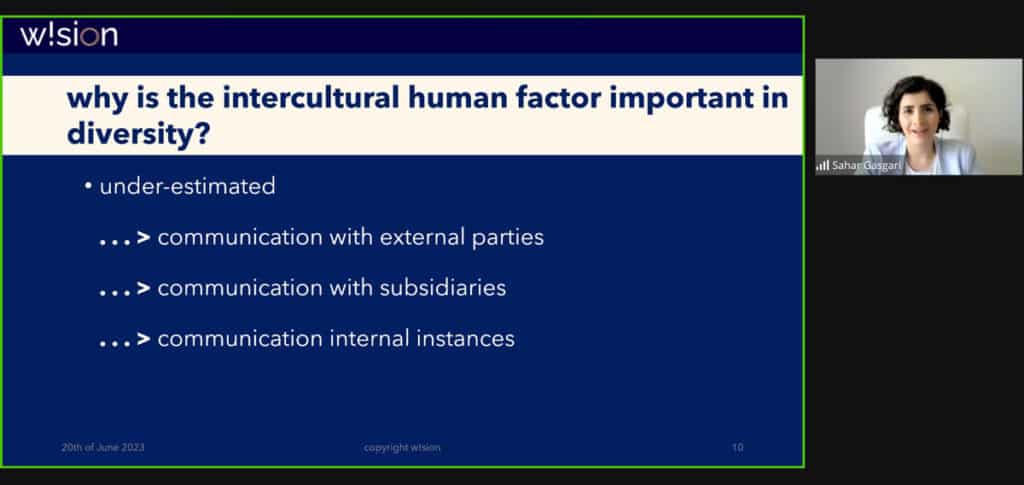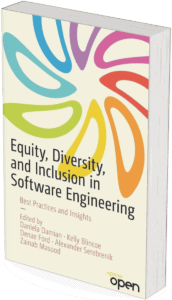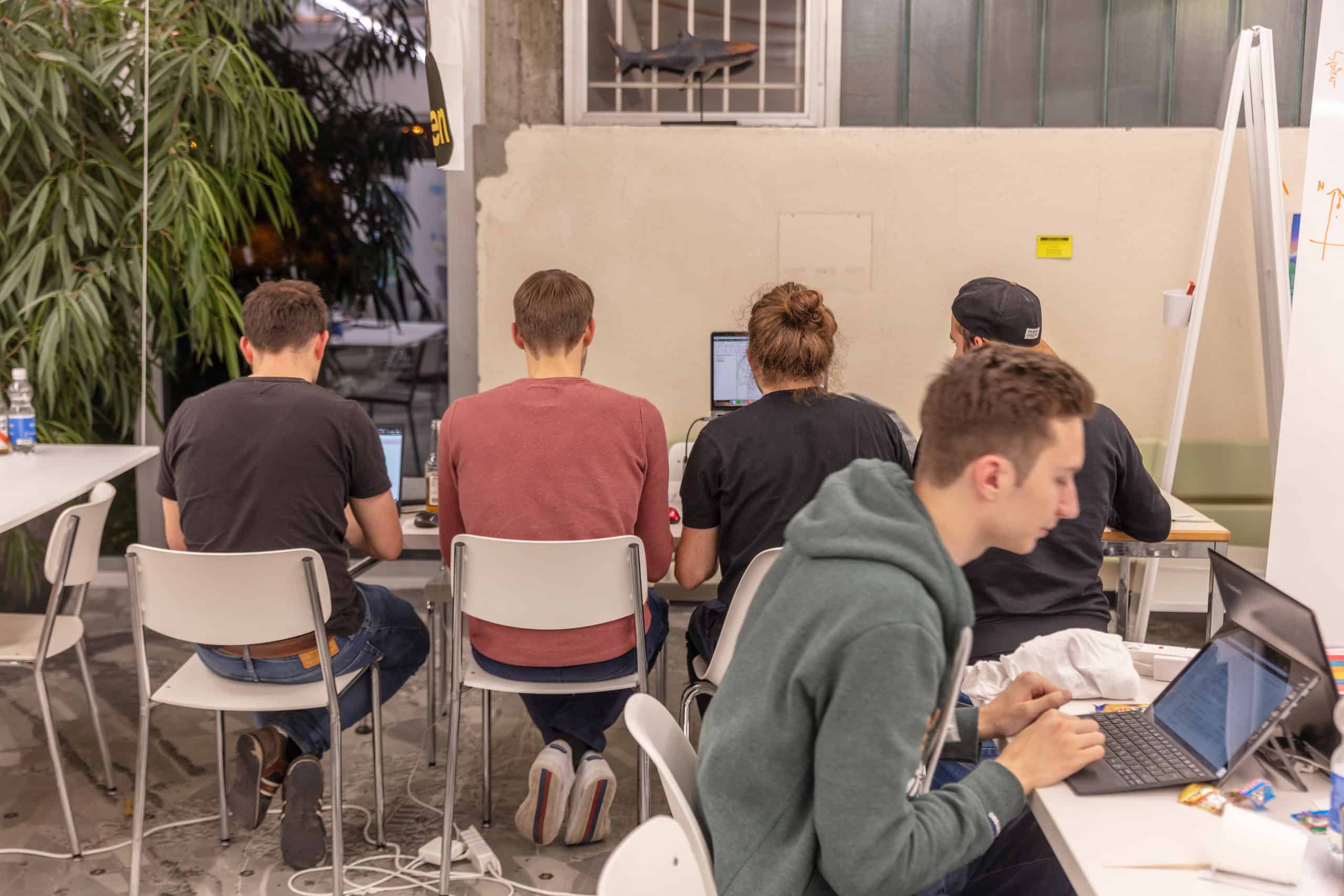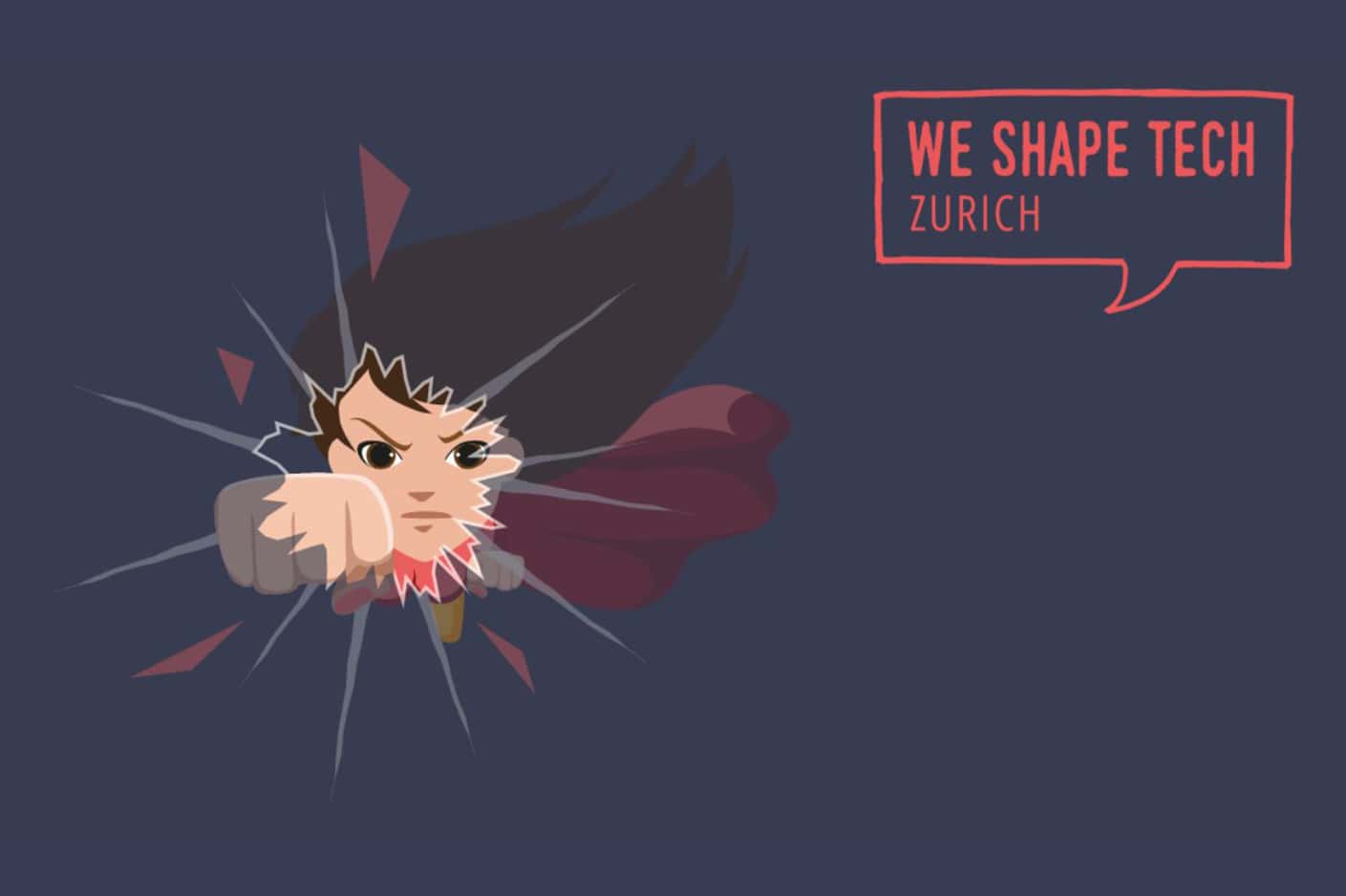On 20 June 2023, Sahar Gasgari-Luu from w!sion shone a light on intercultural diversity challenges in teams. We talked about failings, solutions, and how to successfully include the intercultural diversity human factor in the onboarding and employee (talent) retention field.
In today’s globalised business environment and after COVID, companies face varying challenges in the workforce when it comes to communication. Especially corporations with multinational teams or firms that work internationally need to steadily reflect how to address topics successfully. The necessity for a trustworthy and convincing communication becomes a must-have for teams and leaders that work in or with differing intercultural team environments. An efficient communication will have a direct impact on employees’ top performance and well-being. HR executives talking about on-boarding and retention need to stress these topics and implement them as a step-by-step plan in the strategy.
Read some of the lessons learned next or jump directly to the part that interests you most.
(Some) Lessons Learned
Awareness and understanding
It is crucial to be aware of intercultural differences and similarities when it comes to communication in business. Reflecting on our own communication preferences and being aware that there are different ways of communicating is the first step to show empathy and understanding for others. Misunderstandings, project delays, and team dynamics can be better understood and solved. Offering intercultural trainings and coaching will support team members and business leaders to create open, strong and diverse intercultural working environments.
Customised on-boarding and retention
Failing to effectively customise the onboarding process to accommodate language and cultural differences can create barriers to effective communication and understanding. The company may also miss out on potential cultural and talent growth due to the lack of access to different backgrounds. Being aware that varying cultures prefer different ways of communication helps creating more individually targeted on-boardings as well as employee retention.
For example, while some cultures prefer meeting face-to-face, others prefer phone conversations or email correspondence. The onboarding process needs to be customised for a successful and sustainable employee experience. Feedback round cycles will also differ from individual preferences.
Intercultural training and team building
Currently, there is a huge amount of expat trainings for new hires or staff that work in a different country. But the necessity of including all team members plus the leaders in the intercultural training development is underestimated. A new hire or a new candidate will lead to a different team dynamic and therefore intercultural trainings help prepare all included to work together as well as possible. Intercultural trainings and team-building workshops and trainings can help to strengthen the understanding and solving intercultural topics together.
Commitment of (upper) management
To succeed with long-lasting sustainable and trustworthy communication, management – including the management board – needs to acknowledge the importance of intercultural communication in its own strategy. Being aware that the intercultural diversity human factor does not solely affect staff but also all the external instances such as clients, suppliers, business partners will help to put more emphasis on this topic.
Role models, networks and task forces
Providing opportunities for promotions and personal development for employees with intercultural backgrounds will strengthen the intercultural working environment. Having leadership positions with role models from international backgrounds increases the motivation and performance of other existing and of future employees with intercultural backgrounds. Networks with a mixture of intercultural and regional staff help new candidates to get in touch with employees and match them with buddies so that they feel included, valued and appreciated from day one.
Mentorship and coaching
Keeping in mind that it is not sufficient to only have intercultural trainings in the beginning, key decision makers need to ensure that mentorship and coaching will be provided to intercultural employees and leaders so that the performance, motivation and well-being can reach their full potential.
Psychological safety
Being aware that there will be challenges for employees with intercultural backgrounds, it is crucial to provide opportunities and places where topics can be stated in a psychologically and emotionally safe space. Moreover, being empowered to share ideas, take risks, and contribute to innovation efforts, fosters a culture of continuous improvement for every employee or leader.
11 Steps to a Successful Intercultural Diversity
1
Assess the status quo
Each organisation has its own starting point. Conduct an assessment of the company’s existing challenges and areas of improvement.
2
Develop a DEIB strategy including intercultural preferences
Create a clear and comprehensive DEIB (Diversity, Equity, Inclusion, Belonging) strategy that aligns with the organization’s values, goals, and mission. Define specific measures related to the improvement of the intercultural working environment and include relevant measures in your onboarding process.
3
Establish leadership commitment
Only with the full support of management, the board and senior leaders can succeed on your endeavour to create an interculturally inclusive workplace. Communicate openly and transparently to foster an inclusive working culture.
4
Create awareness and intercultural training programs
Provide intercultural trainings and coaching for all employees to support intercultural awareness and culture sensitivity. Educate employees about cultural differences, unconscious biases, and the benefits of an inclusive company culture.
5
Implement regular feedback rounds and employee surveys
Review recruitment selection, onboarding, personal development, and performance evaluation processes to ensure policies support a diverse and inclusive working environment. Continuously communicate about measures resulting from employee survey results to support authentic feedback from staff.
Recommendation feedback rounds:
Please check with your employees and leaders the regularity of feedback rounds. It might differ from person to person and from culture to culture. While some employees prefer one feedback round per year, others might need more time to build a personal connection and trust and hence more feedback rounds. Accommodating the different needs will help strengthen communication and meet the expectations of everyone involved.
Recommendation onboarding:
Not every new hire has the same expectations when it comes to a successful onboarding process. Try to find out what kind of preferences they might have when it comes to communication: email, phone or meeting at the office. This will again differ from person to person and from culture to culture.
6
Foster employee resource groups and intercultural networks
Establish and foster employee resource groups (ERGs) to identify barriers and opportunities. It provides the possibility to organise events, share experiences and support employees with an intercultural background. Ideally, these groups have a good mixture of staff with a regional and intercultural background.
7
Assign mentors and buddy programs
Offer mentoring programs to achieve personal growth towards leadership positions and pair employees from different intercultural backgrounds as buddies.
8
Monitor, measure, adapt
Establish key performance indicators (KPIs) to assess the effectiveness of intercultural initiatives.
Regularly track and measure progress against the defined objectives. Use feedback mechanisms, surveys, and employee resource groups to gather insights from employees.
9
Communicate about changes and improvements transparently and continuously
Communicating continuously will help keep up awareness for the topic. Ensure that all necessary information and resources are made accessible, keep the content up-to-date and communicate relevant changes and improvements transparently.
10
Conduct offboarding interviews with key learnings
The offboarding process in many companies is currently underestimated. Ensure valuable and respectful conversations so that key challenges can be addressed by ex-employees. Feedbacks in general and during the offboarding process especially, are an important part of the employee experience. It helps to reflect on missed opportunities based on the existing company culture and gives insight of what works well.
11
Start over again: it’s a learning life cycle
Remember that creating a diverse and inclusive workplace is an ongoing effort that requires continuous commitment and improvement.

About Sahar
Sahar Gasgari-Luu is a motivated, positive-minded leader and empathetic intercultural communication specialist. She works as a diversity coach, intercultural trainer, and speaker.
She was born in Iran, grew up in Germany, and graduated with a dual degree in International Business Administration with focus in Marketing in the United Kingdom. Sahar has a coaching degree and is a certified intercultural trainer. She has been living in Switzerland for more than 13 years.
Sahar is the founder and CEO of w!sion. With her diversity coaching, intercultural trainings and speaking services she offers companies sustainable and trustworthy human resources solutions for their leaders, executives, and international teams. After working with her, employees are more motivated, more efficient and identify themselves with an open and diverse company culture – leading to a boost for employees, performance, and the company culture. She is convinced that “employees who feel appreciated, perform best.”
Need help with your intercultural diversity challenges? Sahar is looking forward to tackling them with you 😉













